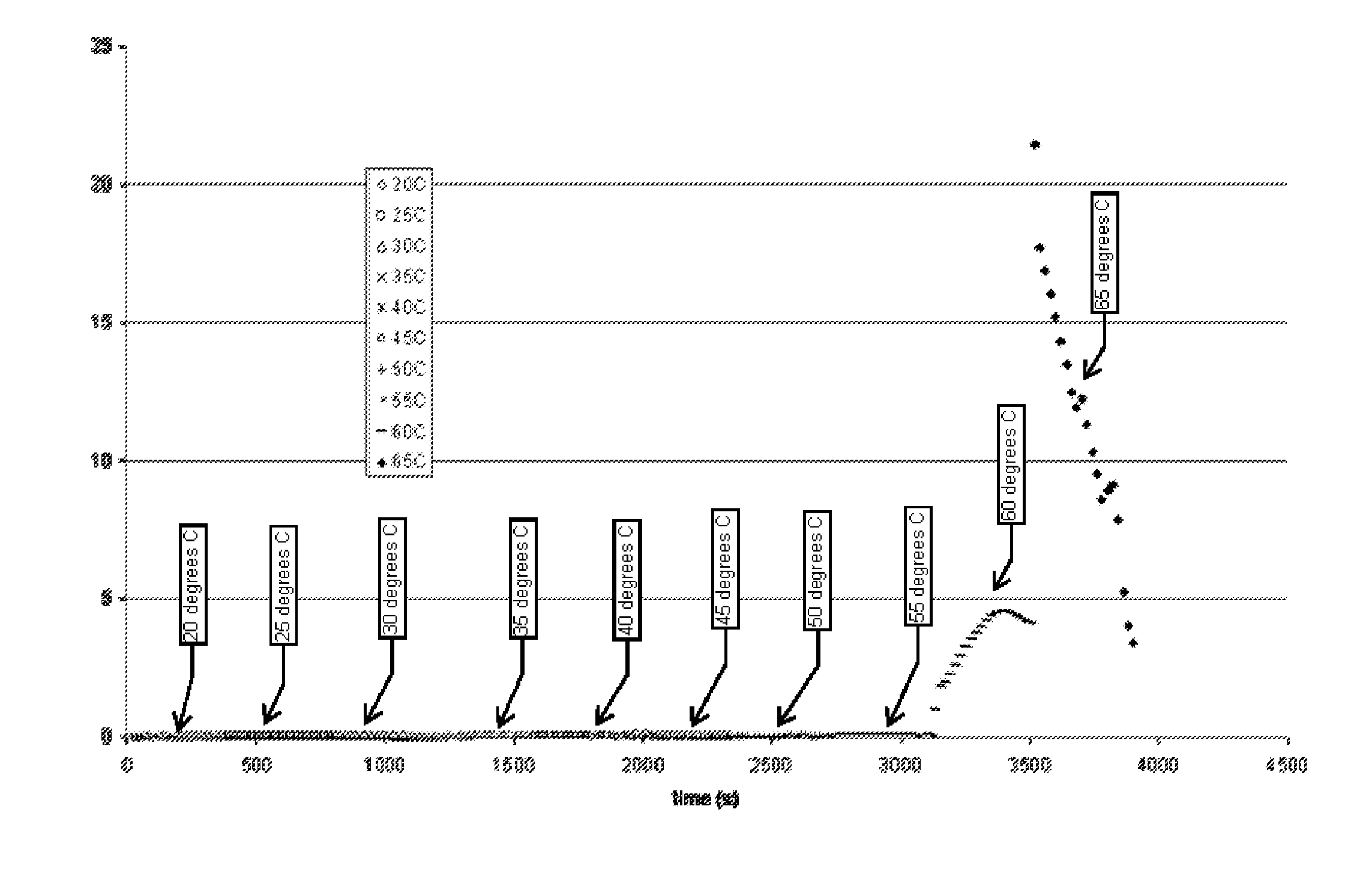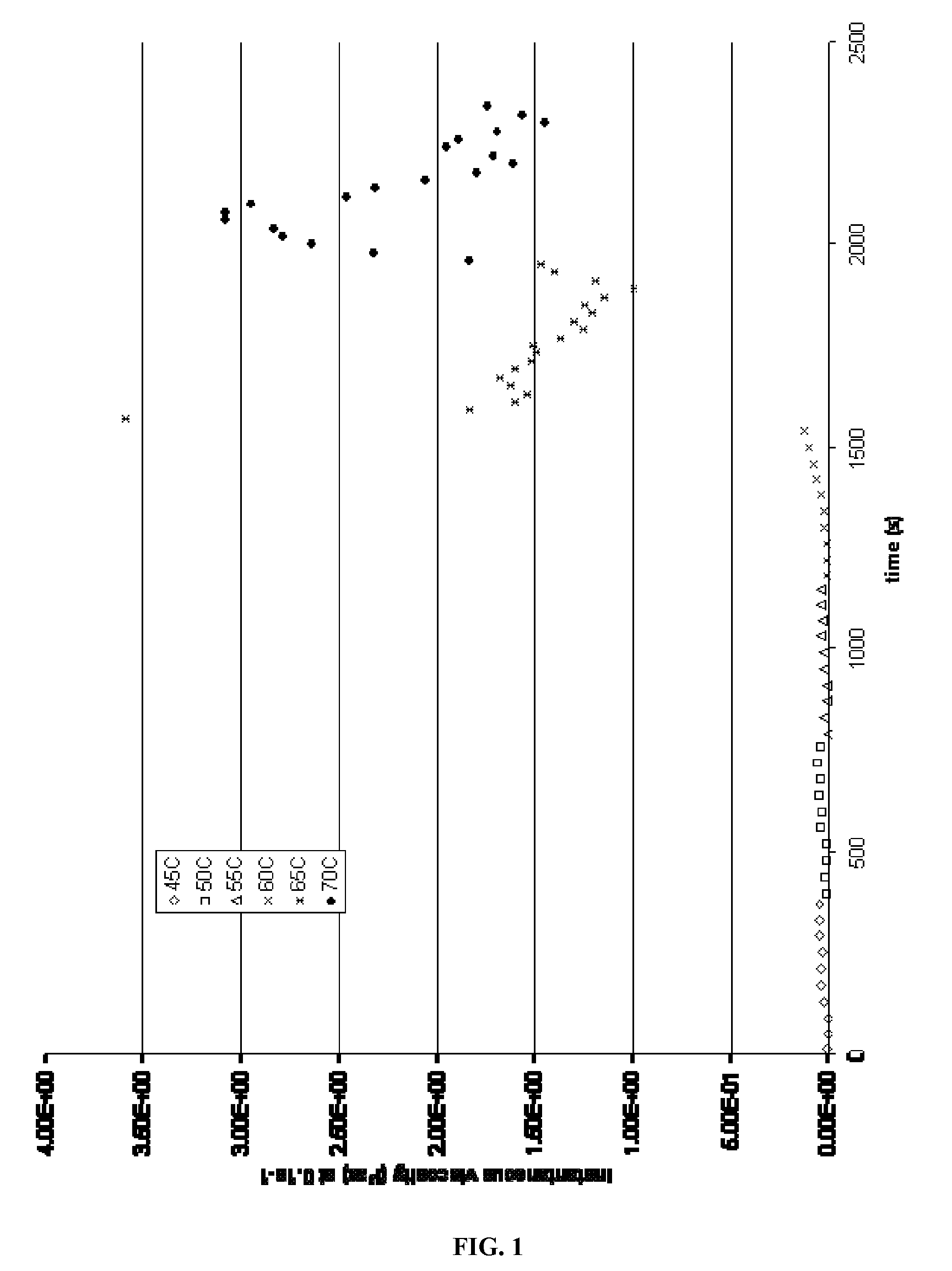Thermoviscoelastic system fluid and well treatment method
a technology of thermosens and fluid, applied in the field of fluids, can solve the problems of low permeability of formation rocks, high leakage rate of ves fracturing fluid, insufficient hydrocarbon production, etc., and achieve the effects of low viscosity, easy and quick preparation, and fast hydration
- Summary
- Abstract
- Description
- Claims
- Application Information
AI Technical Summary
Benefits of technology
Problems solved by technology
Method used
Image
Examples
examples
[0068]In the following examples, aqueous 3 weight percent potassium chloride solutions were prepared with (1) 2.5 weight percent of a thermosensitive polymer (Sample 1), or (2) 2 weight percent of the polymer and 0.5 weight percent of a viscoelastic surfactant (VES) (Sample 2).
[0069]The polymer was obtained from PolymerExpert, 16 avenue Pey Berland, 33607 Pessac Cedex, Bordeaux, France, PolymerExpert under the trade designation EG130, and was a block copolymer of polyethylene oxide (PEO) and polypropylene oxide (PPO) linked by urethane, urea and allophanate bonding units. The polymer was readily soluble in water and quickly dissolved in the brine at room temperature when the fluid samples were prepared.
[0070]The VES in Sample 2 was N-erucyl-N,N-bis(2-hydroxyethyl)-N-methyl ammonium chloride, used in the form of a liquid blend of the quaternary ammonium salt with 25 wt % isopropanol. This VES has an overlap concentration of about_1.2 mM in 400 mM KCl at 25° C., and critical micelle c...
PUM
| Property | Measurement | Unit |
|---|---|---|
| critical solution temperature | aaaaa | aaaaa |
| LCST | aaaaa | aaaaa |
| temperature | aaaaa | aaaaa |
Abstract
Description
Claims
Application Information
 Login to View More
Login to View More - R&D
- Intellectual Property
- Life Sciences
- Materials
- Tech Scout
- Unparalleled Data Quality
- Higher Quality Content
- 60% Fewer Hallucinations
Browse by: Latest US Patents, China's latest patents, Technical Efficacy Thesaurus, Application Domain, Technology Topic, Popular Technical Reports.
© 2025 PatSnap. All rights reserved.Legal|Privacy policy|Modern Slavery Act Transparency Statement|Sitemap|About US| Contact US: help@patsnap.com



